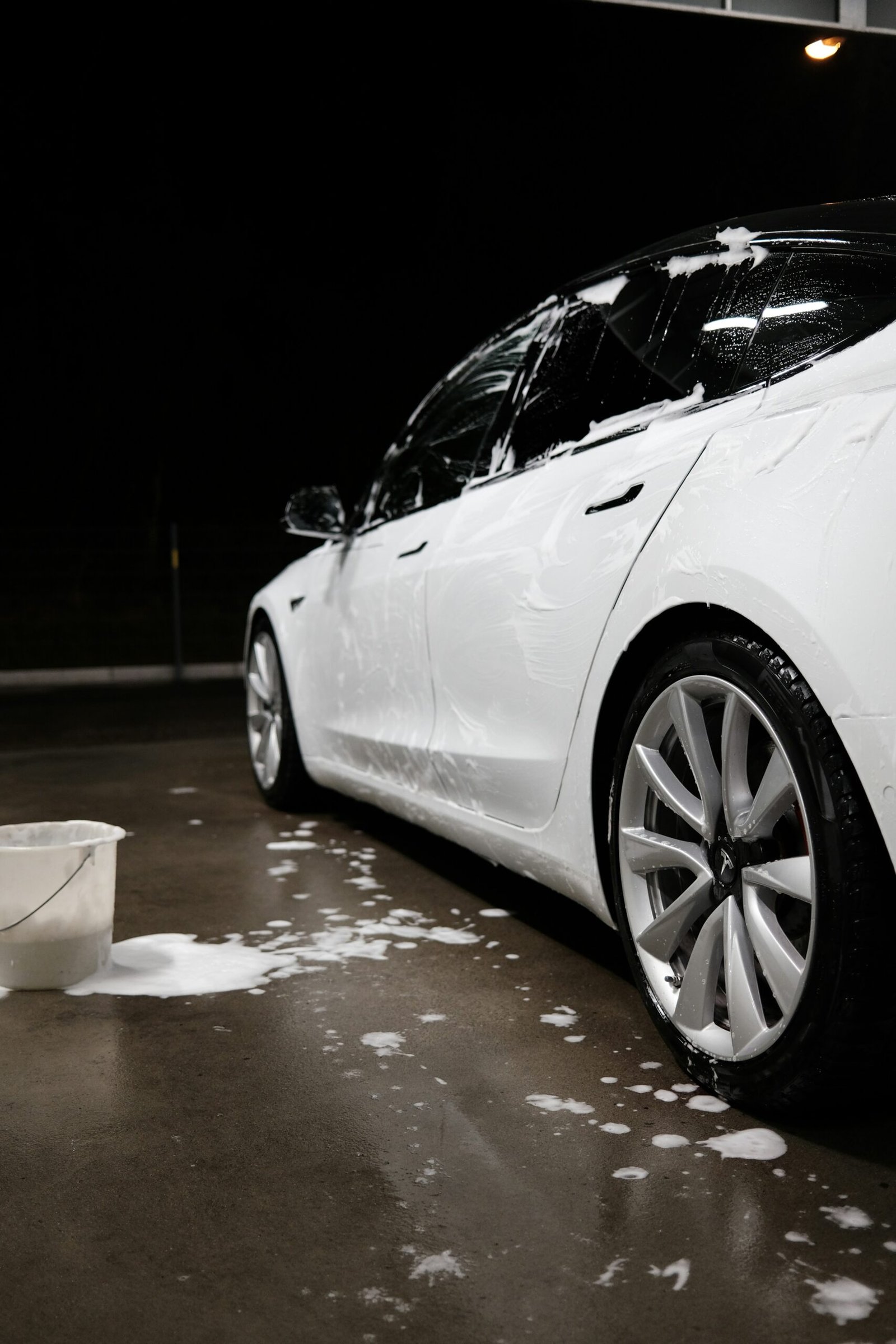Understanding the Source of Odors
Older vehicles often harbor a range of odors that can diminish the overall driving experience. Identifying the source of these unpleasant smells is crucial for effective odor removal. Common sources include mildew, food residue, smoke, and pet odors. Understanding how these smells develop can lead to better strategies for restoration.
Mildew is frequently found in older cars, particularly those that may have suffered water damage or have leaking components. When moisture accumulates in the interior, it creates an environment conducive to mold growth. This type of odor can emanate from carpets, upholstery, and even the air conditioning system, especially if the humidity levels remain high over time. It is essential to inspect these areas to determine if mold is present, as it can not only produce odors but also pose health risks.
Food residues represent another significant odor source. Crumbs or spills left in a vehicle can attract pests and lead to persistent smells. Common areas where food particles may be hidden include under seats, in cup holders, and in the crevices of the dashboard. Over time, decomposing food can emit rancid smells, which can be challenging to eradicate without proper cleaning.
Smoke is another common contributor to undesirable smells in older cars, particularly if the vehicle has been owned by a smoker. The scent can seep into upholstery, carpeting, and the headliner, creating a lasting reminder of tobacco use. Even after cleaning, smoke odors may linger due to their ability to cling to various surfaces.
Lastly, pet smells can be particularly problematic for those who travel with animals. Pet dander, urine, and other scents can become embedded in the fabric and padding of car interiors. This odor can also include the scent of wet fur, further complicating the removal process. Understanding these sources is the first step toward effectively addressing the lingering odors within an older vehicle.
Essential Tools and Supplies for Odor Removal
To successfully revitalize the scent of an older car, it is vital to equip oneself with the proper tools and supplies aimed at effective odor removal. The first category of essential items includes various cleaning agents, each serving specific purposes while ensuring the car’s interior remains undamaged. A popular, versatile option is baking soda, an effective deodorizer that neutralizes odors rather than masking them. Similarly, vinegar is renowned for its natural acidity and ability to tackle foul smells. These substances can be easily integrated into the car cleaning process and are often readily available.
In addition to baking soda and vinegar, specialized car cleaners are worth considering. These cleaners are formulated specifically for automotive interiors and can provide targeted solutions for persistent odors. They come in different types, such as foaming sprays or wipes designed for fabric or leather surfaces. Selecting the appropriate cleaner helps to ensure efficacy while safeguarding the materials within the vehicle.
A microfiber cloth is another indispensable tool when it comes to odor removal. These cloths are effective at picking up dirt and grime without scratching surfaces, making them suitable for both delicate fabrics and hard surfaces within the car. Pairing microfiber cloths with your chosen cleaning agents can optimize the cleaning process while minimizing the risk of damage.
Lastly, a powerful vacuum cleaner is crucial for comprehensive odor removal. A vacuum with attachments specifically designed for automotive use can reach all the nooks and crannies, thereby ensuring the removal of both visible debris and hidden odors. When equipped with these essential tools and supplies, it becomes significantly easier to address unpleasant smells effectively, ultimately assisting in making an older car smell new again.
Deep Cleaning the Interior: Step-by-Step Guide
Deep cleaning the interior of your vehicle is crucial for tackling stubborn odors that may have accumulated over time. The process begins by gathering essential cleaning supplies such as a vacuum cleaner, upholstery cleaner, microfiber cloths, soft brushes, and surface wipes. A detailed approach will ensure that you address every part of the car’s interior.
First, remove all the items from the car, including personal belongings, trash, and any removable floor mats. This step not only helps in decluttering but also provides access to hard-to-reach areas where odors might be trapped. Next, vacuum the entire interior, including the seats, floor, and crevices. Pay special attention to the areas under the seats, as food crumbs and debris often accumulate there. Using a vacuum attachment can help lift dirt from upholstery and tight spaces.
After vacuuming, it is time to tackle the surfaces. Use a suitable upholstery cleaner for the seats, following manufacturer instructions for application. A soft brush can help release trapped dirt, especially from fabric upholstery. For leather seats, a dedicated leather cleaner will help remove stains and restore their natural appearance. Ensure that you wipe any other surfaces, including the dashboard and console, with damp microfiber cloths and surface wipes to eliminate dust and grime.
Moving to the carpets, deep cleaning can significantly enhance the car’s scent. Shampooing the carpets using a carpet cleaner or a dedicated carpet shampoo can help remove embedded odors. After shampooing, allow the carpets to dry thoroughly; this can take several hours. To access hard-to-reach areas, consider removing mats and seats, if possible, providing a more comprehensive clean.
Finally, consider using odor eliminators or automotive air fresheners to conclude the cleaning process. These products may not just cover up odors but help neutralize them. By following these detailed steps, you can rejuvenate the interior of your vehicle and achieve that fresh, new-car scent you desire.
Using Baking Soda for Odor Absorption
Baking soda, or sodium bicarbonate, is an effective and natural solution for eliminating unpleasant odors in older cars. Its unique chemical properties enable it to neutralize acidic and basic odors, making it a versatile choice for tackling various smells, such as food remnants, pet odors, or mustiness caused by moisture. When considering how to make an older car smell new again, the application of baking soda is a straightforward method that can yield significant results.
To begin the process, ensure that the car’s interior is free from any large debris or trash. Next, liberally sprinkle baking soda on the carpets and seats, paying special attention to areas that are heavily infused with odors. It is advisable to use a sifter or simply a small container with holes in the lid for even distribution. The key to effectiveness lies in allowing the baking soda to sit for an extended period — ideally overnight. During this time, the baking soda will absorb the unwanted odors, acting as a sponge to capture the scents lingering in the materials.
After allowing the baking soda to work its magic, the next step involves vacuuming. Use a vacuum cleaner with a hose attachment to thoroughly remove the baking soda from the carpets and seats. This step not only eliminates the powder but also extracts the odors that have been absorbed. For best results, repeat the process as necessary, especially in areas that are particularly challenging.
In summary, baking soda offers a simple, cost-effective method for odor absorption in older cars. Its ability to neutralize odors through absorption provides an excellent first line of defense against musty smells, making your car feel fresher and more inviting.
Vinegar Solutions for a Fresh Environment
Vinegar is widely recognized as an effective and economical solution for neutralizing unpleasant odors in vehicles. Its acetic acid content helps combat a wide range of smells, making it an ideal option for revitalizing an older car’s interior environment. By exploring various methods of using vinegar, car owners can significantly enhance the freshness of their vehicle.
One of the most accessible methods for utilizing vinegar is to create a spray solution. To do this, mix equal parts of water and white vinegar in a spray bottle. This mixture can be applied to surfaces such as the upholstery, carpet, and dashboard. After spraying, allow the surfaces to air dry. The vinegar’s odor will dissipate quickly, taking unwanted smells with it. It is important to note that one should test a small area first, especially on delicate materials, to prevent any adverse reactions.
Another effective technique involves placing bowls of vinegar in the car. Simply fill small bowls or cups with white vinegar and place them in various areas of the vehicle, such as under seats or in cup holders. This method allows the vinegar to absorb existing odors over time. It is recommended to leave the bowls in the car for several hours or overnight, after which the vinegar can be disposed of. Regularly replacing the vinegar will help maintain a fresh environment.
While vinegar is a powerful odor neutralizer, it is essential to be aware of its limitations. Stronger odors, such as those from smoke or mold, may require additional cleaning efforts. Furthermore, car owners should ensure proper ventilation when using vinegar solutions to prevent overwhelming smells. Overall, vinegar offers a simple and natural approach to achieving a fresher ambiance in an older car’s interior.
Cleaning Air Vents and Filters
When it comes to making your older car smell new again, one of the crucial steps involves cleaning the air vents and cabin air filter. Over time, these components can accumulate dust, debris, and moisture, which often leads to unpleasant odors circulating throughout the vehicle. By regularly maintaining these parts, you can significantly improve the overall air quality inside your car and eliminate any stale or musty smells.
To begin with, locate your vehicle’s air vents. These are typically situated on the dashboard and along the sides of the vehicle. Using a soft brush or a can of compressed air, gently clean the vents to remove dust and debris. Be cautious not to damage the vent slats while doing this. Once the visible dust has been cleared, you can use a microfiber cloth lightly dampened with interior cleaner to wipe the vent surfaces, ensuring that any remaining residue is removed.
Next, focus on the cabin air filter, which is responsible for filtering air entering the car’s interior. To access it, consult your vehicle’s owner manual for specific instructions, as locations vary by make and model. Often, the filter is located behind the glove compartment or under the dashboard. Once located, remove the old filter; if it appears dirty or has a noticeable odor, it is best to replace it with a new cabin air filter. A clean filter can dramatically affect the air quality and smell in your car.
In situations where cleaning is insufficient, replacements are readily available at auto parts shops or through your dealership. After replacing or cleaning both the air vents and cabin air filter, you should notice a significant improvement in your vehicle’s air quality and a reduction in unpleasant odors, helping to recreate a more pleasant driving experience.
Odor Neutralizing Products: What Works Best?
When it comes to combating unwanted odors in older cars, selecting the right odor neutralizing product can significantly impact effectiveness. Various products have emerged in the market, each designed to tackle specific types of odors ranging from musty smells to stubborn food residues. Understanding the options available enables car owners to effectively restore a fresher scent to their vehicles.
One popular category of odor neutralizers is air fresheners. These products come in various scents and forms, including sprays, gels, and plug-ins. While they temporarily mask odors, their effectiveness largely depends on the source of the smell. It’s crucial for users to note that air fresheners should not be seen as a cure but rather a short-term solution that can provide immediate relief from minor odors.
Another effective option is enzyme cleaners, which employ natural enzymes to break down organic materials causing unpleasant smells. These products are particularly beneficial for eliminating odors from spills, such as food and beverages, that have seeped into upholstery or carpets. By digesting the organic compounds, enzyme cleaners not only neutralize the smell but also contribute to the overall cleanliness of the surfaces they are applied to.
For persistent and tough odors, ozone generators offer a more powerful solution. These devices produce ozone, which interacts with odor-causing substances to neutralize them. Often employed in severe cases like smoke damage or pet urine odors, ozone generators can penetrate deep into fabrics and hard-to-reach areas. However, caution is advised, as ozone, while effective, can be harmful to humans and pets. Ensuring proper ventilation and restricting access during the treatment period is crucial.
By understanding the various types of odor neutralizing products—including air fresheners, enzyme cleaners, and ozone generators—car owners can make informed decisions based on the specific odors affecting their vehicles. This knowledge can facilitate a more comprehensive and effective approach to rejuvenating an older car’s scent.
Preventative Measures: Keeping Your Car Smelling Fresh
Maintaining a fresh odor inside your vehicle requires consistent effort and a few strategic practices. One of the most effective preventative measures is establishing a regular cleaning routine. This can involve weekly vacuuming and wiping down surfaces with appropriate cleaning products to remove dust and spills. Regular cleaning not only removes potential sources of unpleasant odors but also enhances the overall appeal of your car.
Avoiding eating in the car is another significant strategy for preventing lingering smells. Food particles can easily become trapped in hard-to-reach places, leading to unpleasant odors over time. If it is necessary to eat on the go, opting for mess-free snacks and ensuring that all wrappers and remnants are disposed of immediately can mitigate the risk of odor buildup.
The utilization of air fresheners can also play a vital role in maintaining a pleasant smell within the vehicle. However, it is crucial to choose products wisely. Opting for natural air fresheners can provide a more subtle, long-lasting fragrance without overwhelming the senses. Additionally, placing a few scented items, such as essential oil diffusers or activated charcoal bags, can help absorb unwanted odors while imparting a fresh aroma.
Moreover, ensuring proper ventilation within the car can significantly contribute to keeping odors at bay. Regularly opening windows while driving can help circulate fresh air, allowing musty odors to escape. Additionally, running the air conditioning system periodically can assist in filtering out particles that may cause unpleasant smells.
Integrating these habits into your routine can make a considerable difference in the environment of your vehicle. With consistent maintenance, strategic choices, and conscious practices, it is possible to keep your car smelling fresh over time. This proactive approach to odor management is essential for those who wish to enjoy an inviting and pleasant driving experience.
When to Seek Professional Help
While many odor removal techniques can be performed by car owners, there are specific scenarios where seeking professional help becomes essential. Persistent odors that do not respond to home remedies may indicate deeper issues within the vehicle. For example, foul smells that linger despite thorough cleaning could stem from mold growth or water damage, both of which require specialized treatment. Fungal spores and moisture can accumulate in places that are challenging to reach, such as under carpets or within the air conditioning system. Left untreated, these conditions can worsen, impacting air quality and potentially leading to health concerns.
Another situation that warrants professional attention involves vehicles that have sustained significant damage due to events such as flooding. Waterlogged carpets and upholstery can become breeding grounds for bacteria and mold. In such cases, intensive cleaning procedures, including extraction of water and disinfection, are often necessary. Professionals use advanced equipment and techniques that are far more effective than standard cleaning methods, ensuring that all traces of odor are eliminated and that the interior environment of the car remains safe for passengers.
When considering professional cleaning services, it’s crucial to seek reputable and experienced providers. Look for reviews or testimonials from previous clients, and inquire about their methods and equipment. Certifications or memberships in professional organizations can also indicate a higher standard of service. Ensure that the service you choose emphasizes comprehensive odor removal and follows environmentally friendly practices. In conclusion, understanding when to reach out for professional assistance is key to achieving a fresh, pleasant-smelling car interior, particularly in challenging odor cases.



